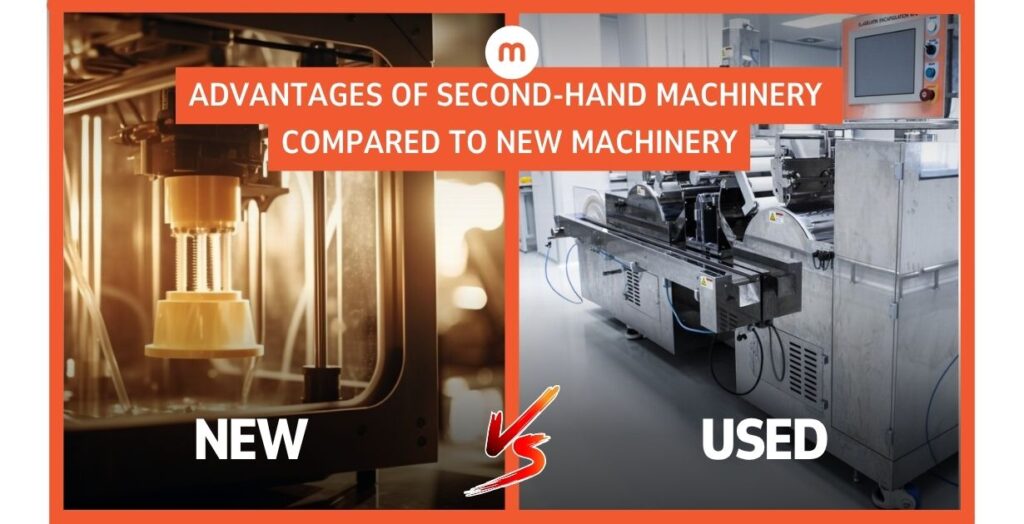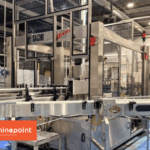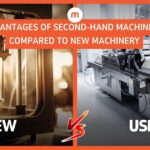Investing in industrial machinery is one of the most important decisions for any company in the plastics, packaging, recycling, beverage, or food sectors. When expanding a plant, upgrading production lines, or replacing outdated equipment, a common question arises:
Is it better to buy new machinery or opt for second-hand equipment?
Although new machinery represents the latest in technological innovation, high-quality used machinery has become a strategic alternative. It not only helps reduce costs but also provides speed, flexibility, and sustainability. At MachinePoint, we analyze in depth the advantages of second-hand machinery over new equipment, with examples of practical applications.
Savings on initial investment
The economic aspect is undoubtedly one of the most decisive factors when choosing industrial equipment. Opting for second-hand machinery means a significant reduction in initial investment compared to buying new, without sacrificing quality or performance.
In industries such as beverages, plastics, or recycling—where technology evolves rapidly and production needs change frequently, this saving can be the key difference between postponing a project or making it happen. Many companies find in the used machinery market an opportunity to access leading-brand equipment with excellent performance and immediate availability, but at a much more competitive cost.
Furthermore, this lower outlay helps maintain healthier financial balance. Instead of allocating most of the budget to purchasing new equipment, companies can redirect resources toward strategic areas such as product innovation, energy efficiency improvement, or market expansion.
A used machine can cost 50% to 70% less than a new one with similar specifications.
In short, second-hand machinery offers a smart way to grow without compromising financial stability, making it a key tool for companies that want to stay competitive in a constantly evolving industrial environment.
Immediate availability
Purchasing new machinery often involves long delivery times—sometimes between 12 and 18 months.
In contrast, second-hand equipment is available in much shorter time frames, allowing companies to:
- Expand production capacity without delays.
- React quickly to demand peaks.
- Seize market opportunities in record time.
For instance, in the beverage industry, where demand can fluctuate based on seasonal trends—having a ready-to-install used filler can make all the difference.
Lower depreciation and higher resale value
Depreciation is a key factor when evaluating the profitability of an industrial machinery investment. Generally, new machines lose a significant portion of their value in the first few years of use. In fact, once installed and commissioned, their market value can drop by up to 30% or more, even if they remain in perfect technical condition.
This phenomenon reflects the market’s dynamics: buyers tend to value pre-owned equipment less, even when performance and productivity are nearly identical to those of a new machine. As a result, initial depreciation becomes a hidden cost that directly affects project profitability.
On the other hand, second-hand machinery has already gone through this accelerated depreciation phase. Its market value tends to remain more stable over time—especially if it belongs to a recognized brand and has been properly maintained. This translates into lower capital loss and, in many cases, better future resale potential.
This makes second-hand machinery particularly advantageous in contexts such as:
- Short-term or temporary projects, where equipment is needed only for a limited period.
- Emerging markets, where companies aim to minimize financial risk and maximize operational flexibility.
- International expansion, where equipment can later be resold in other markets once the project is completed.
Proven reliability and performance
The main advantage of second-hand machinery compared to new equipment is that its reliability has already been proven. These machines have operated for years in real industrial environments, allowing buyers to know in advance their performance, productivity, and maintenance requirements. Unlike a new machine—whose performance is only verified after installation, used machinery offers the peace of mind of a verified operational history.
At MachinePoint, every machine undergoes a rigorous selection process that includes technical inspections, performance testing, and verification of the general condition of key components. This ensures that the machines offered maintain performance and reliability levels that meet the highest industrial standards.
Moreover, leading manufacturers such as W&H, Reifenhäuser, Husky, KRONES, and SACMI design their equipment for long service life. Even after years of operation, their lines continue to deliver high efficiency, precision, and production stability. For example, a used W&H film extruder can still operate reliably if properly maintained, while a Husky PET preform injection machine retains its production capacity and cycle consistency over time.
Choosing second-hand machinery with a documented history and proper maintenance means reducing technical and operational risks, ensuring the investment translates into immediate and predictable performance. Ultimately, these are machines that have already proven their reliability in practice and, after MachinePoint’s validation, continue to be a solid choice to maintain industrial competitiveness and productivity.
Access to premium brands and technologies
The second-hand market opens the door to acquiring equipment from leading brands that might otherwise be out of budget if purchased new.
This enables companies to compete using premium technology without making major investments. Moreover, many of these machines remain highly competitive, even when compared to newer versions.
Flexibility to Adapt to Market Changes
Investing less in machinery means gaining greater maneuverability.
- If a market changes, a used line can be resold more easily.
- It becomes possible to diversify production with lower financial risk.
This flexibility is especially valuable in dynamic sectors such as recycling, where regulations and raw materials evolve rapidly, or in packaging, where demand constantly adapts to new consumption and sustainability trends.
Contribution to Sustainability
Choosing second-hand machinery is also a decision aligned with the circular economy:
- It extends the useful life of industrial equipment.
- It avoids the environmental impact of manufacturing new machines.
- It contributes to reducing industrial waste.
Each reused machine represents a step toward a more efficient and environmentally responsible industry.




